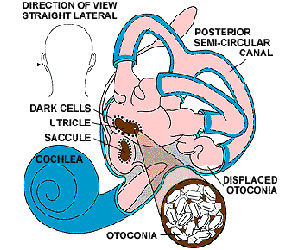3-D Imaging of the Inner Ear Provides Insight for Vestibular Disorder Treatment
What are the typical symptoms and signs of a Vestibular Disorder?
The primary symptoms of a Vestibular Disorder include dizziness, vertigo, and disequilibrium. Dizziness is a sensation of lightheadedness or unsteadiness. Vertigo is a perception of movement of the self or surrounding objects that most people described as spinning and can be quite disabling. Dizziness and Vertigo can be a symptom of many Vestibular Diseases and Disorders.
Disequilibrium means unsteadiness and imbalance that can be accompanied by a spatial disorientation. In and this may present itself as stumbling or difficulty walking a straight line will or turning. Other signs and symptoms include visual-spatial problems, hearing loss, frequent falls, and difficulty moving in the dark, difficulty reading, difficulty concentrating and increased anxiety.
How do vestibular disorders impact the quality of life?
An estimated 33% of all adults with chronic balance problems experience difficulty performing basic activities of daily living such as bathing dressing eating and walking safely without falls. We don’t notice what the vestibular system does for us until it is not working properly. It can be very disabling for many people though with the right treatment and diagnosis we can manage your symptoms and often cure them.
Vestibular Therapy
The National Institutes of Health’s 3D Print Exchange Program and the creative expertise of 3D Brooklyn collaborated to produce the Functional Inner Ear which has become a great tool for Physical Therapists to educate patients about #BPPV and demonstrate the canalith repositioning maneuvers to the patient.
The Functional Inner Ear

Wendy Webb Schoenewald Physical Therapy and Vestibular Rehabilitation Staff are the region’s experts in the care and treatment of Vestibular Disorders. Contact #WWSPT to set up an appointment.


